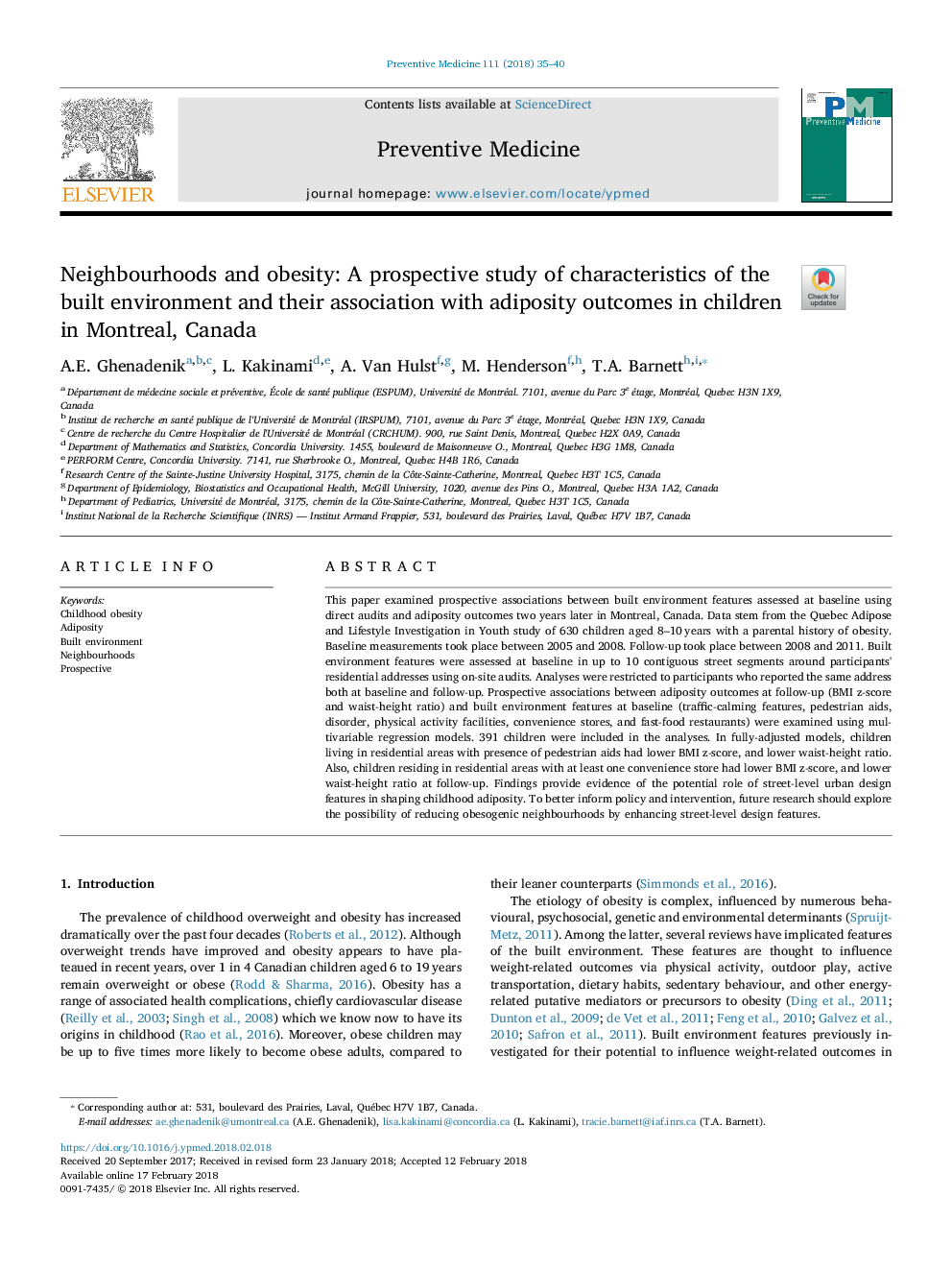ترجمه فارسی عنوان مقاله
محله ها و چاقی: یک مطالعه آینده نگر از ویژگی های محیط زیست و ارتباط آن با پیامدهای چاقی در کودکان در مونترال، کانادا
عنوان انگلیسی
Neighbourhoods and obesity: A prospective study of characteristics of the built environment and their association with adiposity outcomes in children in Montreal, Canada
| کد مقاله | سال انتشار | تعداد صفحات مقاله انگلیسی |
|---|---|---|
| 134506 | 2018 | 6 صفحه PDF |
منبع

Publisher : Elsevier - Science Direct (الزویر - ساینس دایرکت)
Journal : Preventive Medicine, Volume 111, June 2018, Pages 35-40
ترجمه کلمات کلیدی
چاقی دوران کودکی، چاقی محیط ساخته شده، محله ها، چشم انداز،
کلمات کلیدی انگلیسی
Childhood obesity; Adiposity; Built environment; Neighbourhoods; Prospective;

